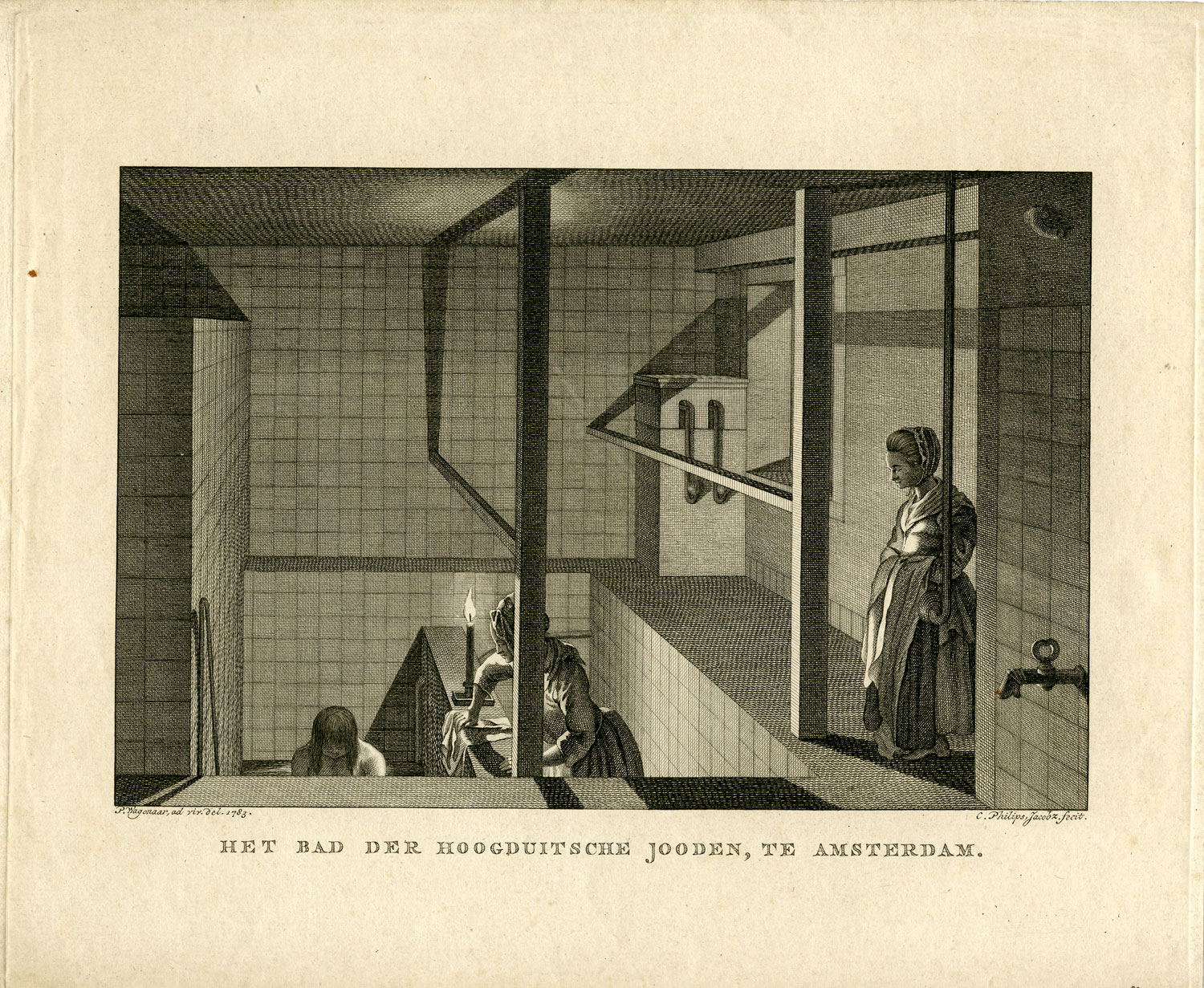This engraving depicts a woman in the mikveh of the Great Synagogue in Amsterdam, the primary mikveh of the Ashkenazi community there. Traces of the structure and its pool have recently been rediscovered adjacent to the synagogue. Mikvehs are ritual baths used for purification. Some community ritual baths were associated with synagogues, often established in basements. In some cases, mikvehs were also installed in private homes.
While mikvehs may be used by men on special dates, such as before Shabbat, on Yom Kippur, and on a man’s wedding day, their regular use is by women, as required in traditional Judaism. According to religious law, a woman must immerse herself in the mikveh after menstruation and childbirth and before her wedding.
Mikvehs have extremely detailed regulations on how they should be built and used; their construction and function both are subject to strict observance of religious law. There is no required architectural form per se, but “live” (running) water is necessary, so ingenious engineering is often required to utilize flowing springs and other sources. Mikvehs cannot be portable and have to be built into the ground, and to qualify as one, the pools must hold a minimum amount of water that has accumulated naturally.
The uses of the mikveh are very specific, requiring an attendant to ensure correct pre-immersion preparation, and then total immersion. Pictured here is a traditional mikveh attendant or shomeret (guardian), assisting a woman in the bath. The scene documents important and specific ritual roles of women, sometimes associated with the synagogue. Because the mikveh was not a man’s world, and also because it relates to issues of modesty, ritual baths are rarely illustrated, making this image unusual and especially informative.
